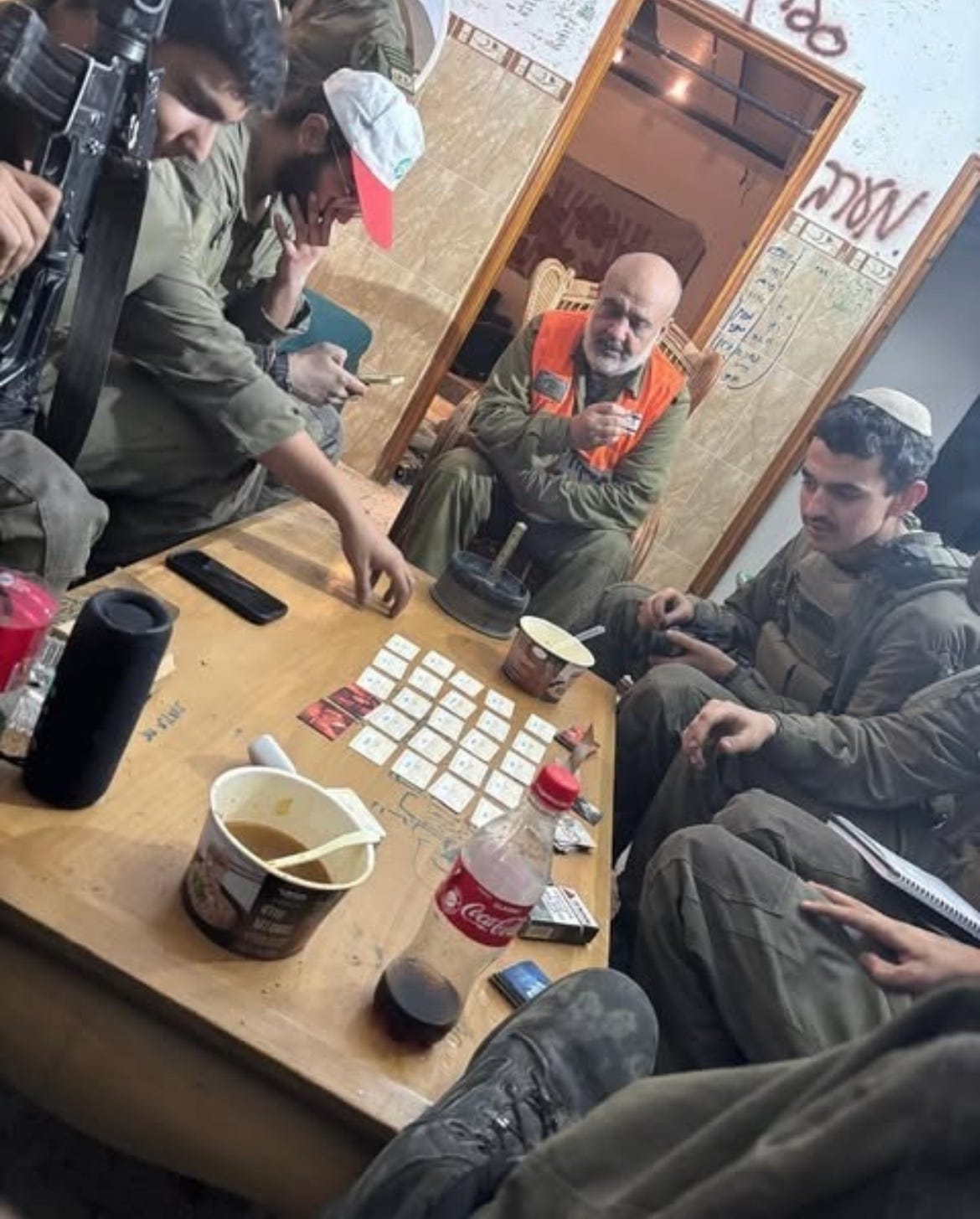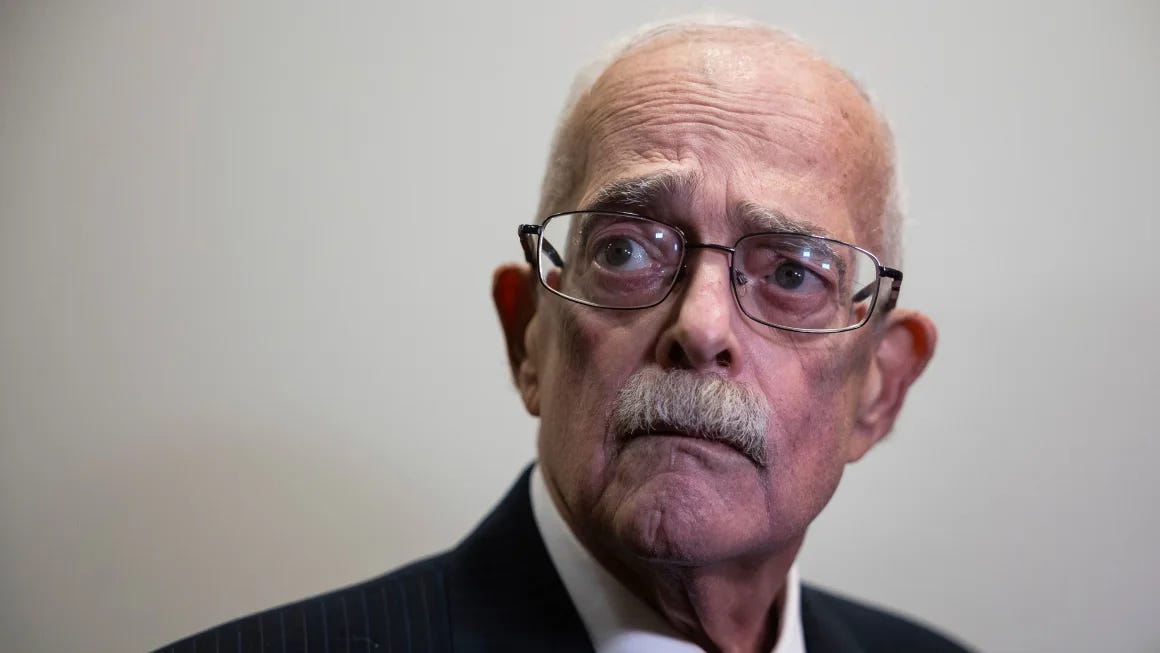Considering the question of whether benzīn aljinn are inherently capitalist, in disposition, ‘person’ality or tendency, the biggest objection would be Soviet Oil. There can be no argument that Baku and Grozny oil was foundational to the stability and growth of the Soviet Union, including the historic defeat of European fascism. However, a closer examination of how Soviets understood the role of oil in their economy does still, to me, point to an inherent affinity between oil and American monopoly capitalism, and that is why a Marxist government must maintain as much control as possible over this commodity in order to survive.
The pleasure of studying Soviet history is that suddenly it becomes a story about intelligent people with the best intentions trying to make the best decisions they can, not in service of self-advancement, but in service of building a more enlightened society. Mistakes were made, and mistakes were carefully studied. In this story, Lenin is wrong, and he was pretty obnoxious about it. In the days of the New Economic Plan, he behaved that way frequently. And yet, the Soviet people working together, even in contravention of direct “orders” from Moscow, somehow did manage to build a collective economy that surpassed in many ways the West, starting from the twenties but reaching a crescendo of hope and solidarity in the thirties, while the rest of the world was suffering depression. Stalinism can only be understood as a continuation of Leninism — especially when you review the history of the revolution in the Caucuses, you see how the two worked together with a network of others to build the Soviet Union.
They say today that Baku is the world’s oldest continuously producing oilfield, but in the nineteen years 1901-1920, it barely met that minimum criterion. The foreign capital (Nobels and Rothschildren) had fled, first beginning when Spindletop tanked oil prices (1901), and then decisively abandoning the region after the 1905 revolution, which resulted in the burning of most of the already-ageing infrastructure around the field.
The largest market for Baku’s oil was always Russia, which was supplied by shipping oil—in the early days, refined products from nearby refineries—up the Caspian Sea to Astrikhan, from whence tankers would make their way up the Volga to Moscow and the rest of the Russian heartland. The route to export oil went in the opposite direction from Baku, across land to the port of Batum on the Black Sea. In the late 19th century, when the Rothschildren and Nobels sat atop the oil of Baku, that infrastructure was maintained by the western capitalists.
During that time, the oil industry turned Baku into a capitalist city in a feudal land, “a proletarian oasis surrounded by a peasant population.” That proletariat was comprised of Russians from the central provinces, Muslims from the Volga region, Armenians, and Iranians. Iranians were considered, in the words of one historian, the “immigrants” who did the most demanding and dangerous work. In place of any connection to the Azeri peasant countryside, class-concious revolutionary politics took deep root in Baku. The city was divided into three areas: the Black city where oilworkers lived and where the refineries were concentrated, the more bourgeoisie white city, and the oil fields.
Leonid Krasin ran an illegal printing press in the factory district known as the Black City. As this story will show, Krasin later revealed some capitalist sympathies, but nonetheless he was a part of core group of Baku Bolsheviks, that included such as Sergei Kirov, Aleksandr Serebrovskii, Sergo Orjonikidze, Nariman Narimanov, and Anastas Mikoyan. The party was led by Stepan Shaumian, but he was shot after fleeing the collapse of the Baku commune. These men all had strong ties to Stalin, based in Tifilis (Tblisi), as well as to the historically strong Iranian communist movements, including the Tudeh party and the Communist Party of Iran. From 1918 until 1921, Tifilis was controlled by The Transcaucasian Seim, which was controlled by Mensheviks, and refused to recognize Soviet power.
In Baku, after the October revolution of 1917, the Shaumian led the local Soviet to declare itself sovereign in Baku, without any shots fired. The problem was that they proceeded to take power by alienating the majority Muslim population, both of the city and the surrounding countryside. World War One was still afoot and the Ottomans claimed big chunks of the South Caucasus; the Treaty of Brest-Litovsk ceded Kars and Batumi to Ottoman occupation. To the extent that Georgia, Armenia, and Azerbaijan wanted to defend themselves from the Axis, they could no longer count on Russia, and so they each declared independence and sought assistance from the British, French, and Americans. This aforementioned sovereign Azerbaijan was the liberal Azerbaijan Democratic Republic (ADR), with its capitol in the second-largest city, Ganja (Elizavetpol). But in the proletarian stronghold of the oldest industrialized city on the planet, Baku, the Bolsheviks had political control while Nobel and other western capitalists still controlled the industry. The Bolsheviks led a series of negotiations with these industrialists, winning the workers a new contract that guaranteed an eight hour day and better wages.
The problem was that the Bolsheviks had to choose a side in the sectarian animosity between Armenians (Dashnaks) and Azeri Muslims. The Muslims were equated with the Ottoman Empire, thought to be somehow working to welcome the enemy into the city. As urban violence between the two groups escalated, the Dashnaks decided that their interest was aligned with the Soviets.
On March 30, the steamship Evelina arrived in Baku carrying the “Moslem Savage Division” (Dikaia divisiia) of the Russian imperial army, and the Soviet moved to disarm the new arrivals. This prompted waves of protest and fear among the city’s Muslims. Nariman Narimanov’s Hummet party, the Muslim Bolshevik party, proposed that the arms taken from the Savage Division be transferred to their own custody, and the head of the soviet, Stephen Shumain, agreed. But while the arms were being delivered, reports filtered in that Muslims were firing on Soviet troops in the streets. The Armenians—Dashnaks—decided they needed to ally with the Soviet, and on March 31st, the shooting war began. Most of the causalties of the so-called “March days” were Muslims, killed by Armenians – up to 3,000 killings. Despite their best efforts to contain the violence, the blood was on Boslehvik hands. When the shooting ended, most of the Muslim population, previously a majority, had fled, leaving the Hummet as the main spokespeople of Muslims in the city. The Bolshevik party, led by Shumain, abolished the right of private ownership of real estate in Baku, with the exception of buildings needed for industrial enterprises. Rent for working people was abolished. The Baku Commune had been founded, self-consciously modeled on the Paris Commune of 1871. But despite the deep involvement of the Hummet, the autonomous Muslim wing of the Bolshevik party led by Nariman Narimanov, the city was cut off from the countryside, resulting in severe food shortages.
The oil industry was still completely in the hands of its prerevolutionary owners, operated independently of government supervision. The oil industrialists were making “the last stand of the bourgeoisie in Baku,” and the soviet was cautious because they needed the oil to continue to flow to Lenin’s new government in Russia. Lenin released a pamphlet, The Menacing Catastrophe and How to Struggle Against It, in which he wrote, “The nationalization of the oil industry is possible immediately and is essential for a revolutionary-democratic state, especially when it is living through a great crisis, during which, no matter what, it is necessary to conserve the people’s labor and increase the production of fuel…In order to do something serious, it is necessary to move from bureaucracy, and to move in a revolutionary manner, towards democracy, i.e., to declare war on the oil kings and stockholders, to decree the confiscation of their property and punishment by imprisonment for interfering with the nationalization of the oil business, for hiding profits or accounts, for sabotage of production, for not taking measures to raise production.” However, his messages to Baku were more hesitant, as he recognized the need to collaborate nationally with the technical elite and “bourgeoise specialists.” The Soviet finally declared nationalization on June 1.
The Treaty of Brest-Litovsk ceded the vital oil export point of Batum, along with the districts of Ardahan and Kars, to the Turkish government. The Turks wanted to unify all of Transcaucasia under Turkish rule, and, using the pretext that Russian forces were “terrorizing” Muslims in the Caucuses, the Pasha’s younger brother, Nuri Pasha, formed a new “Army of Islam” which combined seven thousand Azeri irregulars with eight thousand Turkish regulars in Elisavetpol (Ganja, the second largest city in Azerbaijan), threatening to march on Baku. Although this army clearly marched on orders from Constantinople, it fought in the name of the Republic of Azerbaijan. The Caucasian Red Army, predominantly Armenian/Dashnak, mobilized to retake Eliasvetpol. That effort did not go well. From July 8 to 10, the Red Army fought the Turks at Kiurdamir, and lost, leaving the road to Baku open to the Pashas.
The English, who thought they were still fighting World War I against the Turks and Germans, rather than intervening in the Russian Civil War, had a regiment led by General Dunsterville drive from Delhi to Baghdad to Enzeli in Northern Iran, which was the territory of the nationalist revolutionary Mirza Kuchik-Khan, who could get in touch with the Baku Bolsheviks.
Dunsterville’s offer of assistance to Baku in opposition to the Ottomans became the downfall of the Baku Commune. By August, the Red Army was depleted and morale was low, though they heroically and against all odds continued to defend the city. Popular opinion in Baku latched on to Dunsterville as Baku’s only hope. But Lenin and Stalin were unambiguous in their opposition to collaborating with the British in Baku. Eventually Shaumain, unable to collaborate with the British and refusing to surrender to the Turks, felt he had no choice but to lead the Bolsheviks in evacuating Baku. A right-socialist coalition known as the Dictatorship of Tsentrokaspii took control of the city, and invited Dunsterville’s British forces. When the English arrived in Baku, everyone was underwhelmed, including the Turks, who captured the city in mid-September. Shumain and twenty-six other Baku Bolsheviks were killed.
This was a period of crisis across the Soviet Union; the Civil War was fought on multiple fronts and in conditions of severe material and energy shortages. Baku was now in enemy hands, and although some oil could be purchased, the entire Bolshevik effort was endangered by the loss of Baku. This is why in 1920, Sergo Orjonikidze led the 11th Red Army in a campaign to retake the city. White Russians took control over the fleet of tankers that was used to ship oil from Baku to Astrakhan, at the mouth of the Volga river, and sailed them to Iran. Orjonikidze took the city back for the proletariat in April 1920. When his Red Army arrived in Baku, the situation was grim.
The nationalities policy could have brought down the Soviet Union from the Caucasus, if only by preventing the rebuilding of the Baku oil industry and, even more important, its link to Batum, which was an essential source of foreign currency for the Dictatorship of the Proletariat. In that region – present-day Georgia, Azerbaijan, and Armenia—was where class solidarity threatened to be undermined by ethnic politics. Despite the efforts of the Hummet, the Baku Commune had become an enemy of Islam when it allied with the Dashnaks. That is why, for Baku Bolsheviks who had worked with comrades in the Iran for years, the revolution would necessarily be incomplete until it incorporated Muslim West Asia. This is why Narimanov promoted the vision of a Soviet Azerbaijan that was economically interdependent but politically autonomous from the Soviet Union—because he wanted to go help Iran. Help that was sorely lacking when they needed it in Iran in 1952. According to historian Sara Brinegar, in 1920, Lenin made an explicit deal with Narimanov that Azerbaijan would have substantial political and economic independence and autonomy as long as the necessary oil was produced and shipped.
In April 1920, with Baku in Soviet hands but the countryside was split, isolating Baku from Batum and Tiflis, Lenin sent Nariman Narimanov, Sergo Orjonikidze, Sergei Kirov, and Alexandr Serebrovskii back to Azerbaijan. Narimanov was appointed the Chairman of the Soviet of People’s Commissars of the Azerbaijan Soviet Socialist Republic, with the mandate to facilitate social connections between the Azeri peasant countryside and the city of Baku. Orjonikidze, as chair of the Caucuses Bureau, was “in charge of ensuring that Baku remained over Soviet control,” and Kirov acted as his deputy and as a representative of Moscow.
Alexandr Serebrovskii had been born into a family of anti-tsar revolutionaries and joined the Bolshevik wing of the RSDRP in 1903. The Bolshevik commission assigned him to work in a factory in St. Petersburg as a machinist and organizer under the name Luginov. Again under direction of the Bolsheviks, he joined the movement of Father Gapon who lead the 1905 revolution. Following that event, he was sent to Baku, where he worked in the oil fields, lived in the Black City, and organized with the Baku Committee Bolsheviks, until that organization was raided by Tsarist police and he fled back to St. Petersburg, where he was arrested. He fled to Europe, worked for the Bolsheviks smuggling weapons in from Finland, and earned a degree in engineering in Brussels. He returned to Russia at Lenin’s request in 1913, was arrested again by the Tsarist police, and was sent to the north Caucuses. He was conscripted into the army at the start of the Great War, and participated in the 1917 revolution in that capacity. After the October Revolution, he led a company and then a battalion of the Red Guard, before being appointed Deputy Chairman of the Extraordinary Commission for the supply of the Red Army. On April 16, 1920, he was in Moscow and Lenin requested a meeting. Baku was still under capitalist control, and Lenin was planning the offensive that would retake Baku, ten days later. As soon as he walked in the door, Lenin asked, “How do you feel about oil?” Lenin got Serebrovskii to accept the chairmanship of the Azerbaijan Oil Committee (Azneft), to organize the oil industry and increase productivity as much as possible, and to direct the shipping and transport of oil and its products. The command of the 11th Division of the Red Army, which had been led by Ordzhonikidze during the Civil War, was placed at his disposal to realize these goals.
Lenin and his planners and advisers were counting on Azneft not just for energy, but for foreign capital. They decided that the rest of the Soviet economy, which needed to be rapidly industrialized, should never become dependent on oil. Industrialization should proceed on coal power alone as much as possible. Coal was more accessible from a greater number of sources; they even bought coal from the British. That would allow them to conserve the oil and earmark the largest portion of Baku’s production for export. Send as much to oil to Batumi as possible. This was their only meaningful source of foreign capital, and as historian Sara Brinegar points out, the Soviets understood oil as the point of leverage that they could use to force capitalist countries to come to the table, recognize the legitimacy of their government, and renounce their ownership claims over resources that had been nationalized, and give the Soviets access to foreign currency. Petroleum engineer and GOSPLAN analyst Strizhov wrote a report entitled “The Role of Russia in Global Fuel Supply” which argued that Russia should sell oil and buy coal, specifically from the British. “Russia, in the interests of the entire global economy, should export oil, replacing it at home with coal. This replacement will be beneficial for Russia because in giving 1 pood of oil she receives in exchange 2-3 times more per caloric value of coal.”
For that reason, it was not enough for Orjonikidze to take Baku; Batumi was equally important. The city had been occupied by the Ottomans during the war. And it would not do to have Azerbaijan and Georgia administered as separate entities; Baku-Batumi was a Transcaucasian operation. And so Moscow pushed for the unification, which entailed the invasion of Tifilis in 1922, in turn enabling the creation of a unified the Transcaucasian Republic out of Georgia, Armenia, and Azerbaijan. Even though the Azeris and Armenians were only a couple years out from having been at war with each other.
For the Soviets, having a border with Iran was like having a border with the British Empire. The Anglo-Persian Oil Company completely dominated southern Iran. But the country was cut in half, north to south; the British hadn’t built transportation between the two worlds. From Tehran, it was easier to get to Baku than Shiraz. Tabriz is the capital of the East Azerbaijan Province, in northwestern Iran. In 1915 and 1916, several Bolsheviks including Orjonikidze traveled to Iran disguised as Georgian refugees and reestablished contact with other revolutionaries including the nationalist leader Mirza Kuchuk Khan.
In 1920 when the Red Army took Baku, the White Russian General Anton Denikin took the functioning oil tankers—needed to supply oil to the domestic Russian market—along with his navy to the port of Enzeli in Northern Iran. Orjonikidze and Fedor Raskolnikov, the commander of the Volga-Caspian fleet of the Red Army, wanted to pursue and defeat Denikin. Lenin was afraid of provoking England, but he recognized that Enzeli was far from Anglo-Persian’s territory, and gave permission. On May 18, 1920, Raskolnikov’s fleet captured all of the White fleet, and the British evacuated quickly. Officially, Soviet Union troops were evacuated from northern Iran almost immediately, on June 6, but in reality the forces of the Azerbaijan Soviet Republic remained, working with a bourgeoisie anticolonial movement in Iran led by Kuchuk Khan, who declared a Soviet Socialist Republic of Gilan on June 4, 1920. The two Communist parties in Iran at the time were both based in Baku: the Adalat, led by Avetis Sultanzade, whose base was in the Iranian oilworkers in Baku, and the Iran Bureau of Communist Organizations (Iran Bureau), also based in Baku, but which functioned as a part of the Bolshevik party. The Soviet Union did work to obtain oil concessions in Iran, but ended those efforts and clumsily evacuated Azerbaijani troops from North Iran with the Russo-Persian Treaty of Friendship, February 26, 1921.
The oilfields at Baku and Grozny were in ruins, and the Soviet Union was suffering through a major energy famine, without access to either oil or coal from the Donbas. In Baku, There was major flooding in the wells, and none of that underground pressure that in America pushed oil up wellbores; in Baku, Iranian workers, known as “bailers,” climbed down to the bottom of the well, filled up buckets, and used ropes to pull them to the surface. They frequently suffocated from gas fumes. There was a severe bread shortage, a cold winter, and even a shortage of warm clothes. In July 1920, only sixteen barrels of oil were extracted per day. A report by Serebrovskii to the Baku Oil Commission noted that workers were most commonly seen half-naked and without shoes, huddled around machines that gave off steam. Workers were going unpaid and work was going undone. “The situation is catastrophic,” concluded the report. They needed access to Western technologies specifically around rotary drilling and the deep well pumps that could get rid of the water sitting on top of the oil.
Lenin did not think the Soviets could remedy the situation on their own. He wanted to give concessions to capitalist companies that would give them an ownership stake in the operation. Leonid Krasin felt that if given a share, foreign capitalists would protect the Soviet economy by protecting their investments. This became part of the New Economic Plan of 1921, which marked the end of the War Communism era. This idea was met with fierce resistance from the Baku Bolsheviks (Kirov, Serebrovskii, and Orjonikidze) who were supported by prominent petroleum geologists Ivan Gubkin and Strizhov. Together, they articulated a Marxist approach to oil that I admire, and now that oil has become important enough to merit a term, I’d call petromarxist.
In January 1922, the chairman of the Soviet of Labor and Defense Gleb Krzhizhanovskii submitted a report to the Politburo titled, “Why We Should not Offer the Industrial Regions of Baku or Grozny for Concessions” that argued that because oil is a source of energy it must “be completely and indivisibly under the control of the government.” It was irresponsible, he argued, to allow foreign capital a controlling interest in such a resource. The Russian State Planning Committee (Gosplan), agreed.
One of the top Gosplan strategists was a geologist named Ivan Nikolaevich Strizhov, who before the had administered oil fields on the ground in Baku and Grozny both before and after the revolution. He authored much of the Gosplan material on the oil industry that had been submitted to the Preparatory Commission for the (useless) Genoa negotiations. One such report dated February 1922 was “Oil Business. Mistakes of the Past and Signposts for the Future” which argued that during the Nobel/Rothschild era, engineers and geologists did not manage the wells rationally. He documented the fact that due to flooding, nearly 3,000 of 3,650 wells were currently inoperable, because private companies had never pumped out a well, but “just moved to the wells that were easiest. They just expanded and found new wells leaving the old ones in disrepair because it wasn’t profitable. State interest did not lie with the duties of private firms. No one compelled them to do it [fix the wells] and they didn’t do it themselves because it wasn’t profitable.” After the fires of 1905-06, the state stepped back and let private companies rebuild, which never happened. “Thus, the struggle with the flooding of the oil fields was, is, and must be a problem for the state… I think that the struggle with flooding is a difficult struggle that we will inevitably have to lead, that we will have to put in the hands of the state because otherwise it will be a ruined business.” The wells in Baku need continuous drilling to remain productive because of the low reservoir pressure. This requires centralized effort, whether organized by capitalist corporations or the state.
He wrote
“I think that the oil industry is the type of branch that in particular/by its very nature [preimushchestvu] demands a plan that takes many years ahead into account, the kind of branch that must be a unified state industry, and must be built according to a specific complete plan.”
This is not how Lenin saw it, and not what was in the official New Economic Plan, passed in 1921. He believed Leonid Krasin, who was a very close advisor who had good ties to the West, who believed that the only way to develop Baku oil was to give concessions to Western oil companies. Krasin developed a legal framework for “joint stock companies” that essentially reproduced capitalist structures but gave the Soviet an ownership share. Lenin continued to push for this, and the fact that Serebrovskii was able to pursue an alternate course illustrates the bankruptcy of the bourgeoise perception that Lenin and Stalin were autocrats who ruled with absolute power. Serebrovskii didn’t work for Lenin, he worked for the workers of the Soviet Union. When you have the same stake in the success of your own industry as everyone else, everyone works together to attain a shared prosperity. This is fundamentally healthy to the human spirit; when you are working for everyone, and not just for a capitalist who will capture all the surplus value you create, then there is no longer anything ugly about working hard to reach a desired end. This was manifest in the early years of Azneft. Because Serebrovksii was an idealistically committed Old Bolshevik, it was important to him that the entire oil industry remain in Soviet hands regardless of what Lenin said. And instead of arguing with his friend and comrade, he just did it his own way.
Lenin was unconvinced, and continued to push for concessions to be granted to capitalist oil companies. He sent Serebrovskii a letter that read, with emphasis in the original, “It is extremely important that the Baku comrades grasp the correct (and approved by the Tenth Party Congress, that is, mandatory for members of the party) view on concessions….There is nothing more dangerous and deadly to communism than a communist boasting ‘we can do it ourselves.’” According to Serebrovskii’s memoir, Lenin subsequently sent a telegraph to Sergo Ordzhonikidze that read “Serebrovskii should not be offended by the tone of my telegram: I was concerned about the fate of Baku. I consider Serebrovskii the most valuable worker. I demand from you frequent and accurate information about the results of work to improve the oil business in Baku, as well as the results of foreign trade operations. Show this telegram to Serebrovskii.” Lenin got his frequent and accurate information.
Kirov returned to Baku in 1921 and immersed himself in the details of oil Azneft’s oil production, consulting for long hours with Serebrovskii and Gubkin. Kirov was closely connected to the oil industry from his “management of Caspian smuggling in the summer of 1919.”
The three agreed that what Azneft needed were rotary drilling and deep vacuums, both of which required foreign equipment. This is why Lenin believed that he needed to accept foreign concessions over up to a quarter of oil production. But Kirov, Serebrovskii, Gubkin, Strikhov, and Stalin all agreed that specifically what they needed were the rotary drills and the vacuums. You can buy rotary drills and vacuums. You can even buy them and then pay someone to show you how to use them. You don’t have to give that person an ongoing stake in your business. To me, this points to a failure of democratic centralism in the adoption of the New Economic Program – these knowledgeable workers should have been consulted before adopting Leonid Krasin’s Joint Stock Companies as official policy.
Instead Serebrovskii dedicated himself to getting for Baku what Baku needed—not just rotary drills and vacuums, but also workers. Since the daily operations of Azneft in Baku were in the hands of extremely competent comrades, he was able to take trips abroad. The first one was to Constantinople, where he first sold a large quantity of Kerosene to the French utility Sosifros. He also was aware of a large shipment of oil-related machinery that had been sitting in Turkish customs for the last few years, and was able to bribe the Turks to release it to be sent to Baku. He also needed workers.
At the end of the Russian Civil War, the troops who had served under the White Russian Pyotr Wrangel had been evacuated to Constantinople, and they’d basically been stranded there ever since. They made camp outside the city, and were just sort of idle and miserable. Serebrovskii went into the camp, and offered the “soldiers and Cossacks” employment in the Baku oilfields, “back home,” along with, of course, a suspended sentence for having been on the wrong side of the war. More than five thousand people took him up on the offer, and he was able to arrange for a steamship to take the first load of them back to Baku.
Before going back home himself, Serebrovskii had lots of meetings to attend. With Standard Oil, with Sosifros, and, what turned out to be the best one, with an American, Mason Day, who rand a mid-size drilling services company out of Oklahoma, Barnsdale International. Leonid Krasin had told Lenin that the Soviet Union couldn’t do any business in Constantinople, calling the residents “crooks.”
Serebrovskii went back to Moscow, where Lenin told him, “What do you want, the holy spirit to descend on our engineers and teach them how to work on rotary drilling?” Then home to Baku, and then in July 1921, back to Constantinople to arrange transportation for the remaining White Russian troops who wanted to come to Baku. “My wife Anna Ivanova and I made connections with them” in the camp, Serebrovskii explains, “even organized a rally there.” After the rally, one Cossack asked him to come to the stable to talk secretly with the Cossacks gathered there who wanted to come home. “But in the stable there were not ordinary Cossacks, but Cossack officers. They attacked me with sabers, and I barely managed to grab a pitchfork and repel the first attack. Of course, it was impossible to defend oneself for long with a pitchfork in hand, but suddenly French soldiers appeared.” He was able to arrange two ships full of workers.
General Wrangel, had retired to his yacht while his men languished in camps, and he happened to see the second ship full of workers bound from Baku. Apparently there was some “misunderstanding” because the soldiers on the ship threw trash at their former General. Wrangel complained to the British who “decided” to arrest Serebrovskii. Mason Day went to the American ambassador, and the Americans sent a Destroyer to take Serebrovskii back to Batum before the British could place him under arrest.
When the destroyer reached Batum, the sailors were treated to a fantastic shore leave that included “Batumi wine and Batumi girls” but also attended meetings and workshops to learn the Soviet system.
In September 1922, Serebrovskii signed two extensive agreements with Mason Day, the president of Barnsdall. The state department approved the deal.
These agreements are referred to in the Soviet paperwork as “concessions” but they were of a fundamentally different nature than what Lenin (per Krasin) had in mind: they were fee-for-service, with no ownership transfer. It was rather, a technology transfer. Barnsdall agreed to import, at its own liability, the tools, equipment, and personnel with the knowhow to drill 20 wells, at least 10,000 feet in the first year, no less than 20,000 in the second, and no less than 30 annually thereafter. The agreement was terminated by mutual consent in 1924. Each well was paid for on a schedule based on 80,000 rubles per each sazhen (7 feet) drilled, payable either in gold rubles or in oil. Barnsdall imported the equipment at its own risk. The drilling agreement was written not to include the majority of oilfields that the U.S. State Department insisted were still owned or leased by private interests, and the agreement was not successfully challenged in American courts. However, a Hoover Institute historian writing in 1968, Anthony Sutton, who studied how the Soviets managed to attain the technology they needed to industrialize in the 1920s and 1930s, bitterly notes that the pumping agreement, separate from the drilling agreement, did cover the whole of the Baku field and that “International Barnsdall considered it prudent to misrepresent the area covered by the contract.”
Sutton shows that the Barnsdall contract was essential to the development of the Soviet oil industry. They got their rotary drills and vacuum pumps, and were also able to build factories to manufacture that equipment themselves. Their technology evolved over the course of the 1920s and got exactly as efficient and productive as it needed to be in order to sustain the greatest experiment in egalitarian social development in human history. And when Mason Day’s team left in 1924, the Soviets were left with full control over their own industry, knowledge of rotary drilling, pumping, and other modern oil industry techniques.
Sutton is likely underestimating the importance of Serebrovskii’s second technology transfer. In 1924, Serebrovskii, accompanied by his wife, travelled first back to Constantinople, where he arranged an ongoing purchasing agreement with Jersey Standard for Baku’s refined products. Then he went to the UK and from there to New York. The “Standards,” now plural but still under the control of Walter Teagle, who answered to John Rockefeller, had agreed to show him their factories and oil production sites around the country. They agreed that he could buy anything he wanted, and it would be charged against the proceeds from the oil products delivered to Constantinople. On condition that he go see the “old man.” Teagle insisted.
Serebrovskii drove 100 miles to Rockefeller’s estate, shared an unpleasantly brisk walk with his host, followed by a meal. Rockefeller insisted the Serebrovskiis stay the night, saying,
“’I know how hospitable everyone is in Baghdad.’ Granted, I was from Baku, not Baghdad, but who would force an old American, and a Rockefeller at that, to relearn geography, which he had apparently thoroughly forgotten, even if he had studied it. ” …
“But in the subsequent conversation the “old man” revealed that he was a real swindler. Apparently knowing his business, he was well informed about the affairs in Baku. He was probably better informed about the work of the Barnsdale Corporation and our wealth than we were ourselves. But Rockefeller emphasized several times that he, too, was in favor of supporting the Soviet oil industry, provided that we would be his allies against Deterding. Incidentally, we did not ask him about this.
“In the morning I was woken up before dawn. I turned out that the “old man” had gone for a walk before breakfast and wanted to talk to the ‘Baghdad oilman” during his walk. I was not averse to taking a walk either. After breakfast I said goodbye to him and left. He was one of the smartest and therefore most dangerous enemies of Soviet power. Many sabotage activities were financed through him, espionage and intervention organizations were supported with his funds, but he never spoke out directly and openly against us. On the contrary, “Standards” seemed to have always been loyal to the USSR.”
For Standard Oil, the rivalry with Shell was much more important than the protection of overall class interests.
And so, Serebrovskii set off on a tour first of Pennsylvania, where he “got acquainted with machine-building plants. I studied in detail the manufacture of drilling rigs and all drilling tools.” He visited refineries in New Jersey, Philadelphia and Chicago, metal factories in Pittsburgh and Detroit, and the oil fields of Pennsylvania, Oklahoma, Texas and California. All along the way he was ordering samples to be sent back home. Finally, he settled in Long Beach for a time to study the technical aspects of drilling in-depth. His many cutting insights into America are priceless, and we can’t quote them all here, but we must include this passage:
“Nowhere is the dependence of a poor person on the landlord, the capitalist, the policeman, the shopkeeper, and the devil knows who else so striking as in “free America.” Here everything is specially created so that the rich can own both the person and the property of the poor, his family, his savings, if they still remain, by his power. If it has not been previously sold to another capitalist. The only surprising thing is that many of these people, who do not belong to themselves, who have been sold in advance into hereditary bondage, do not see or understand this, and think that this is how it should be, that ‘this is how God’s world was already created.’”
It appears that Anthony Sutton, writing in 1968, was not aware of this trip or didn’t find it significant enough to mention.
Armed with the appropriate technology, Serebrovskii and Strizhov oversaw the rational redevelopment of the oil production in Baku, rebuilding pipelines, building refineries, trying to control the vast movement of people into the city. Their decisions determined materially the Soviet answers to “the nationalities question,” or how non-Russian populations would be integrated into the economic whole while maintaining respect for local autonomy and cultural traditions. This was the question central to Stalin’s career, as it was for many other Bolsheviks. Strezhov proposed that the infrastructure of the oil business bind together Azerbaijan and Russia; so where before oil was refined on-site at Baku, new refining capacity should be built in Russia proper. “We have to make it so the regions cannot live without the state for even a minute. Therefore Baku should only extract oil and refining it should be done in the center of Russia, and everything that is necessary for Baku’s oil industry, all of the pipes, cables, sulfuric acid, belts, etc.—all of it should be produced in Russia.” By developing all of this material interdependence, Moscow could afford to leave the regions full political, cultural, educational autonomy without fearing that it would backfire. This did not become policy, and refining continued to be tightly centralized in Baku, eventually providing a tempting target for prospective enemy bombers. However, the oil industry in Baku did become closely integrated with the overall Soviet economy, and the majority of oil was shipped up the Volga region to provide fuel for agriculture and military uses.
Production continued at high but sustainable levels until the first five-year plan in 1928 accelerated production even more. Serebrovskii found ways around the cashflow problems: Azneft was expected to give fuel to vital national industries for free, and did so. The workers, for their part, developed a culture of competitive productivity, and Aznet met the immense needs of the rapidly industrializing Soviet Union both for liquid fuels and for foreign exchange currency. It wasn’t dramatically hurt by the global oil price decreases that followed the opening of the East Texas oilfield in 1931, although production did level off and even decrease a bit during the 1930s, as the five year plans generated focused growth in the coal-burning industrial sector.
Serebrovskii moved on from the oil industry to the gold industry – I’m not exactly sure why. In 1937, he was accused of smuggling gold to Trotsky, and was executed for this crime in 1938, then posthumously rehabilitated under Khrushchev. I don’t have any insight into whether he was guilty of this act; following Khrushchev’s secret speech, most Western sources automatically assume that every accusation made during this purge was false. In his memoirs On The Oil Front, Serebrovskii reveals a close working relationship with Stalin, and barely mentions Trotsky at all. Ordzhonikidze died under mysterious circumstances in 1937.
Ivan Strizhov went on to discover and develop new oil and gas fields in the Ural-Volga region and Western Siberia. These new sources decreased the Soviet dependence on Baku and Grozny’s oil industry over time.
Subscribe now













